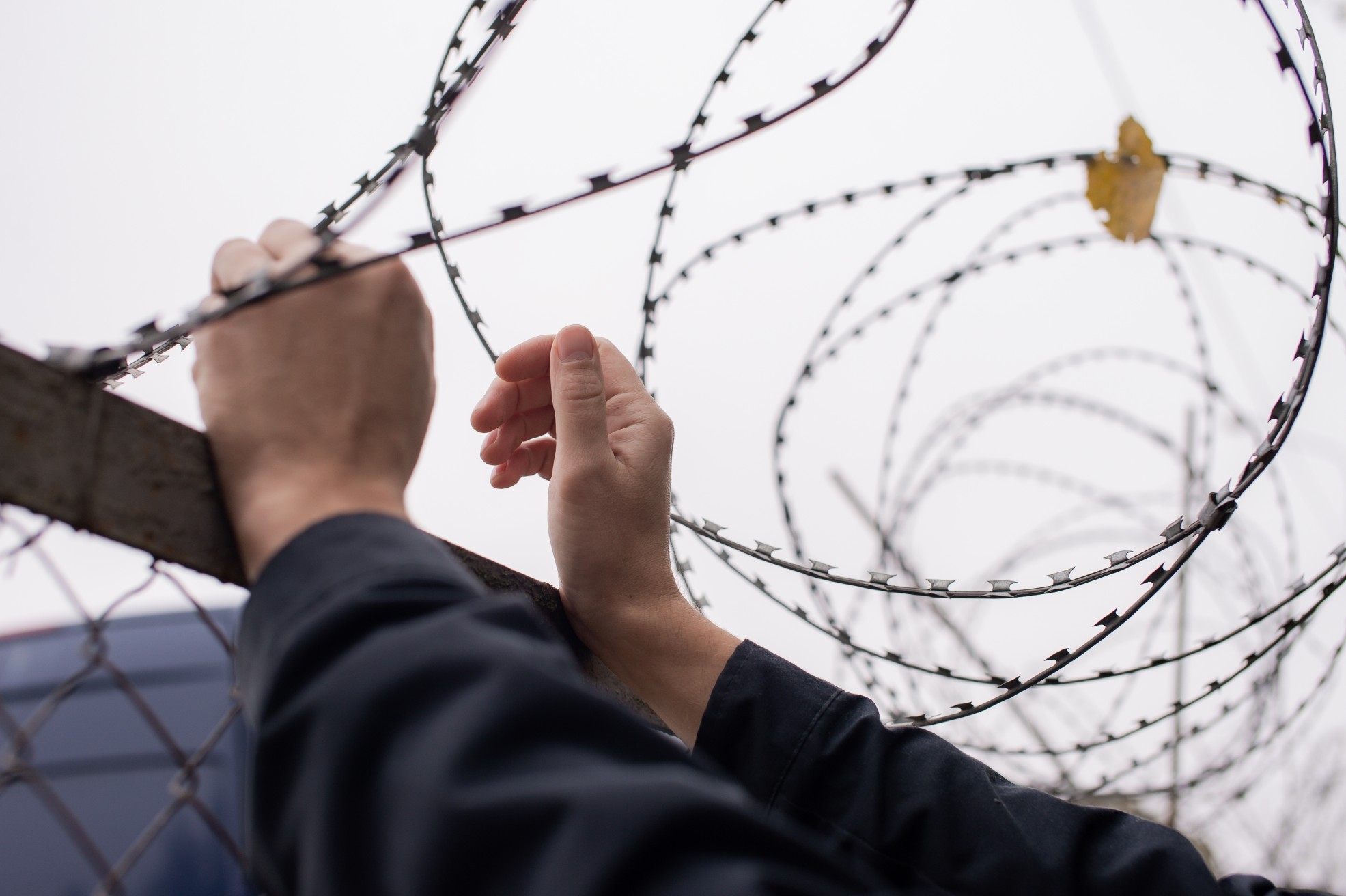Border Security – Strengthening National Defense through Advanced Technology and AI

In an increasingly interconnected and globalized world, the need for robust border security has never been more critical. Border security ensures the protection of a nation's sovereignty by preventing unauthorized entry, smuggling, human trafficking, and other illicit activities that can threaten national safety. As threats to national borders evolve, so too must the methods and technologies used to safeguard them. In recent years, the integration of advanced technologies—especially artificial intelligence (AI), surveillance systems, and data analytics—has transformed how border security is managed and monitored.
Modern border security is no longer solely reliant on physical barriers or personnel; instead, it incorporates real-time data analysis, AI-driven threat detection, drones, sensor networks, and automated surveillance systems to ensure that borders remain secure while minimizing the need for human intervention. These technologies not only enhance security but also improve efficiency, cost-effectiveness, and responsiveness.
This blog explores the critical role of border security, the advanced technologies driving innovation in this field, and how platforms like AiDOOS are helping governments and security agencies implement AI-powered solutions to strengthen border protection.
Border security plays a pivotal role in protecting national integrity, maintaining law and order, and ensuring the safety of citizens. As global threats evolve, from terrorism and organized crime to illegal immigration and the smuggling of contraband, the need for efficient and adaptive security measures has become more apparent. Effective border security requires a delicate balance between facilitating the legitimate movement of people and goods while identifying and mitigating potential threats.
The challenges that border security agencies face today include:
Detecting and Preventing Illegal Entry: With increasing numbers of migrants seeking to cross borders, security agencies must use advanced technologies to monitor and control border points while ensuring that legal travel is not impeded.
Countering Smuggling and Trafficking: Illegal activities such as drug smuggling, arms trafficking, and human trafficking often occur across borders. Border security systems must be capable of detecting concealed goods or individuals and identifying suspicious activities in real-time.
Managing Cross-Border Crime: Organized crime networks often operate across international borders, making border security a vital tool in tracking criminal activities and preventing the movement of contraband or fugitives.
Enhancing Security While Streamlining Trade: Border security must also focus on ensuring the smooth flow of legitimate goods and people, maintaining security without causing unnecessary delays or bottlenecks in trade and travel.
The introduction of AI, machine learning, real-time data processing, and advanced surveillance systems has significantly enhanced the effectiveness of modern border security operations. These technologies not only increase the ability to detect threats but also automate processes that traditionally required significant human resources. Here are the key technologies driving innovation in border security:
AI plays a critical role in modernizing border security operations by automating threat detection, analyzing vast amounts of data, and enhancing decision-making. AI systems can identify patterns in border crossings, analyze behaviors, and detect anomalies that might suggest illegal activities.
For example, machine learning algorithms can analyze surveillance footage in real-time, automatically identifying suspicious movements, vehicles, or people who might pose a threat. AI-driven facial recognition systems are used to cross-check travelers against criminal databases, flagging high-risk individuals before they cross the border.
Drones equipped with high-definition cameras and thermal imaging are becoming essential tools for border security. They provide an aerial view of vast border regions, especially in areas that are difficult for personnel to access. Drones can patrol borders autonomously, sending real-time data to command centers, where AI systems analyze the information to detect potential threats.
In addition, autonomous surveillance systems, such as sensor-equipped ground robots, can patrol remote areas, detect unauthorized crossings, and provide real-time alerts to security forces.
Internet of Things (IoT) technology is revolutionizing border security by creating interconnected sensor networks that provide constant surveillance. Sensors can be embedded in physical barriers, roads, and vehicles to monitor activity across extensive border areas. These sensors can detect motion, heat, or unusual disturbances and send data to centralized control systems for real-time analysis.
For example, smart fences equipped with IoT sensors can detect unauthorized attempts to breach the border, while vehicle-mounted sensors can scan cargo for contraband. IoT-enabled sensors provide continuous monitoring of border areas, reducing the need for manual patrols.
At legal border crossing points, automated border control (ABC) systems have streamlined the process of verifying identities. Biometric systems, such as facial recognition, iris scanning, and fingerprint identification, are widely used to ensure that travelers are who they claim to be. These systems help reduce wait times at border checkpoints while maintaining a high level of security.
Automated border control systems work in tandem with AI-powered databases that cross-reference traveler information with security and criminal records. This allows border security agencies to flag potential risks and respond immediately if a suspicious traveler is detected.
Data analytics plays a pivotal role in border security by providing actionable insights from vast amounts of surveillance data. AI-driven analytics tools can predict potential security risks by analyzing trends and patterns in border activity. These tools help border security agencies anticipate potential illegal crossings or smuggling attempts, allowing for a more proactive approach to securing borders.
Predictive analytics platforms are also used to identify high-risk zones where illegal activities are likely to occur, enabling security forces to focus their resources more effectively.
The integration of AI and advanced technologies into border security offers several strategic advantages:
Improved Threat Detection: AI and data analytics provide real-time threat detection, enabling security agencies to identify and respond to potential risks more efficiently than traditional methods. This leads to faster and more accurate decision-making, reducing the risk of unauthorized entry or smuggling.
Cost-Effective Border Management: Automation reduces the need for a large physical presence at borders, decreasing the costs associated with staffing, patrolling, and manual surveillance. By deploying AI-powered systems, governments can maintain high levels of security while optimizing their resources.
Proactive Security Measures: Predictive analytics allow border security agencies to take a proactive approach to border management. Instead of reacting to incidents after they occur, AI-driven systems can predict where illegal crossings or smuggling attempts are most likely to take place and deploy resources accordingly.
Enhancing National Security: Secure borders are a key aspect of national defense, helping prevent the entry of criminals, terrorists, and contraband. AI-powered surveillance systems ensure that border security agencies are always one step ahead of emerging threats.
AiDOOS is helping governments and security agencies implement advanced AI-driven border security solutions by providing access to a global network of experts in AI, IoT, data analytics, and autonomous systems. Through AiDOOS, security agencies can rapidly develop and deploy cutting-edge border security technologies that leverage AI for threat detection, automated surveillance, and predictive analytics.
For example, AiDOOS enables the integration of AI-powered surveillance platforms that analyze real-time data from drones, sensors, and cameras, allowing border security forces to detect unauthorized activity and respond more effectively. In addition, AiDOOS supports the development of biometric identification systems and automated border control solutions that streamline traveler verification while maintaining high levels of security.
By partnering with AiDOOS, governments can enhance their border security operations with the latest technology innovations, improving both efficiency and responsiveness to emerging threats.
As threats to national borders become more sophisticated, the future of border security will increasingly rely on AI, autonomous systems, and predictive analytics. Autonomous drones and robots will play a greater role in border surveillance, while AI-powered systems will continue to refine the ability to detect and respond to threats in real time.
Additionally, biometric systems and automated border control will become more widespread, improving the flow of legal travelers while ensuring that security is not compromised. IoT-enabled sensor networks will provide continuous, real-time monitoring of borders, reducing the need for physical barriers and human patrols.
In an era where global threats are constantly evolving, border security is essential to maintaining national defense and public safety. The integration of AI, surveillance technologies, IoT, and predictive analytics has transformed border security operations, enabling governments to detect and respond to threats more effectively and efficiently.
By partnering with AiDOOS, security agencies can leverage cutting-edge AI-driven border security solutions, ensuring that their borders remain secure while improving cost-effectiveness and operational efficiency. As technology continues to advance, the future of border security will be defined by automation, intelligence, and real-time responsiveness.

By adopting tools like AI, predictive analytics, and cloud-based command systems—and by integrating them through Virtual Delivery Centers—COOs can convert uncertainty into action and fragility into resilience.